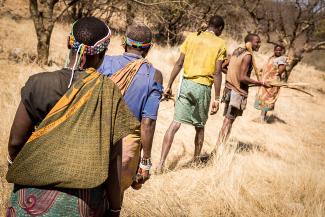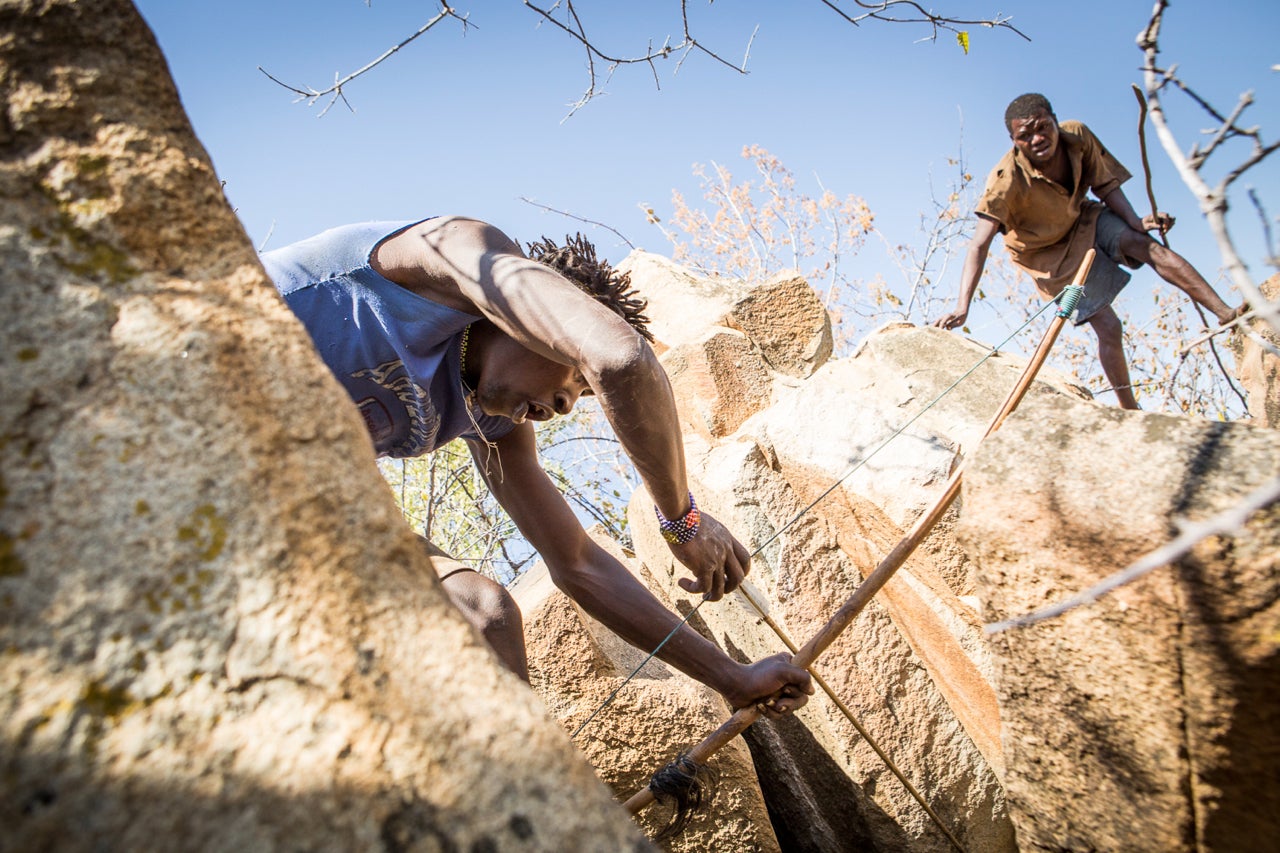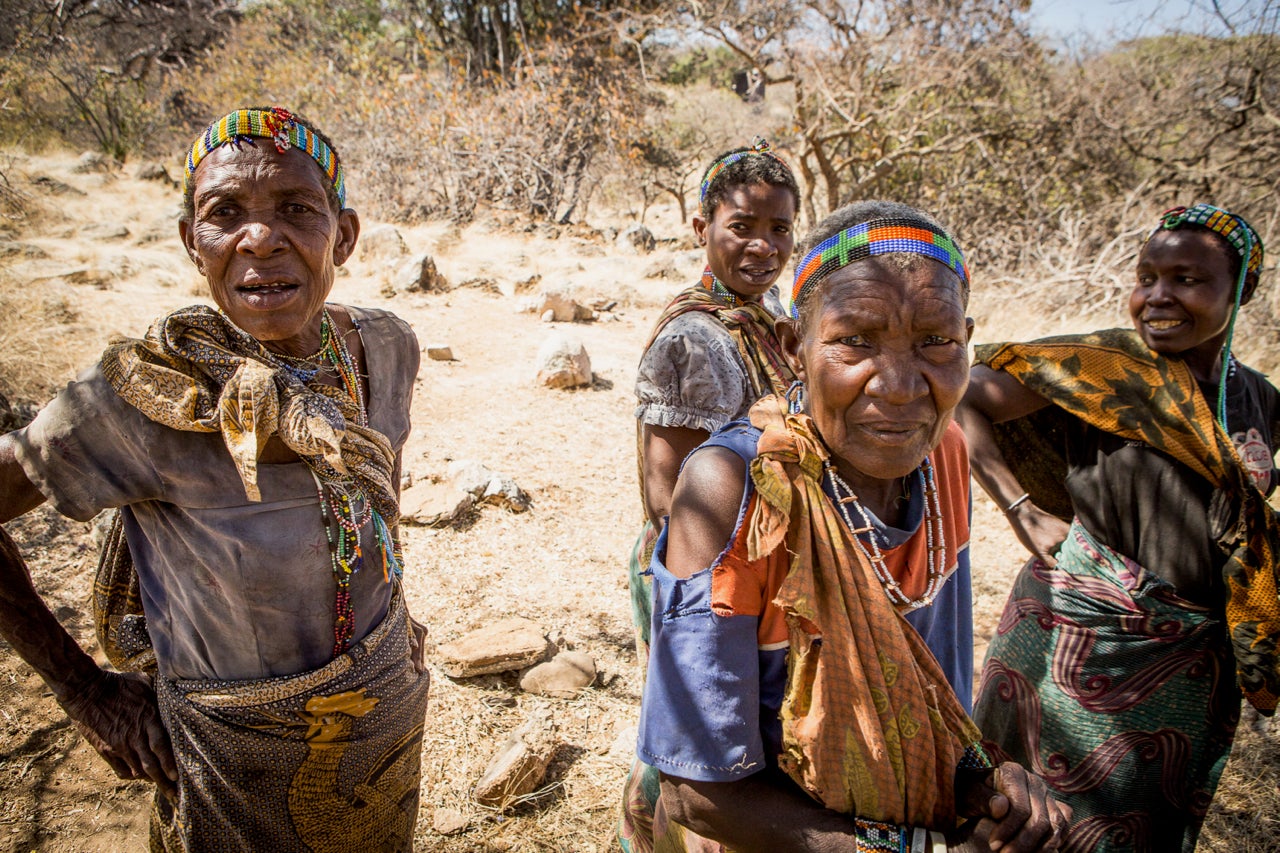
Many Indigenous Peoples across the world face threats to their traditional ways of life as newly established conservation areas increasingly make their traditional pastoral, migratory, and hunting and gathering ways of life illegal. These parks are being created in response to countries’ commitments to meeting the United Nations goal of protecting 17 percent of land by 2020. But poor planning means the protected areas often omit critical habitats and key species: several studies by the UN Environment Programme and others have found that protected areas include little or no habitat for about 90 percent of threatened or endangered species. In a rush to access funding, some governments are using conservation as a pretext to evict Indigenous Peoples from their lands and limit access to the animals they have co-existed with for generations in order to make room for tourism, industry, and at least notionally, wildlife.
Despite billions of dollars being poured into the creation of protected areas, the projects frequently are found to contribute to human rights abuses, conflict, and a loss of cultural diversity. The “people versus conservation” approach is not working, as Indigenous Peoples have been voicing for decades. Many Indigenous Peoples have managed their lands sustainably for thousands of years, and now a growing body of scientific evidence is affirming that well defined land rights for Indigenous Peoples is one of the most effective ways to ensure forest conservation.
Tanzania at a Crossroads
The savannahs and grasslands of Northern Tanzania are one of the world’s most spectacular landscapes, stretching across more than 6 million acres and including the Serengeti, Tarangire National Park, Ngorongoro Crater, and West Kilimanjaro; some of the world’s most iconic natural beauty. Our human origins lie in these landscapes, and today these majestic sites create a wildlife corridor for elephants, lions, giraffes, and many other animals. Each year, migrating wildebeest, zebra, and antelope thunder over the land, moving between wet and dry season ranges in the largest wildlife migration on Earth— populations of large mammals that have disappeared from most other parts of Africa and the world at large.
The region is also a crossroads for different cultures and ethnic groups, all of whom depend on the lands as they have for generations, and for some, thousands of years; the wild, open corridors connecting the region’s renowned conservation areas are essential arteries of life. Economic development and natural resource management are inseparable to the people who inhabit the area, but the last century has been particularly challenging for many rural communities in Tanzania as both pre- and post-independence governments have shifted control over lands and resources from local to national authorities. Much needed incentives for sustainable use and management have been eroded by this loss of local rights and control.
Tanzania’s history of displacing communities to create national parks in the 20th century underpins a fierce opposition to proposed land preservation efforts in this area. Edward Lekaita is a lawyer for Ujamaa Community Resource Trust, a local organization in northern Tanzania working with Indigenous Peoples. “People believe they have lost lands to conservation because they kept land undisturbed and therefore it was prone to be taken for conservation purposes,” says Lekaita. “For them, the history of land alienation is very well connected to conservation. The best conservation model is to engage local people. Evicting people from their lands to pave way for wildlife is the wrong approach to conservation, especially hunter-gatherers whose practices are very [respectful of] wildlife.”
Driven by an increasing human population and competing land use interests, wildlife corridors are being squeezed. Habitat and traditional homelands are shrinking, and with them, the twin pillars of Tanzania’s economy: tourism and livestock.
Farmland is rapidly replacing and fragmenting rangeland, which in turn is eroding land for wildlife and hunter-gatherers. And the people who have thrived here the longest, leaving no trace on the landscape, often have no rights to the land.
The Hadza

The Hadza are hunter-gatherers with an egalitarian social structure who have lived in the area for some 80,000 years or more, just south of the section of the Great Rift Valley in which some of the oldest fossil evidence of early humans has been found. Today there are about 1,300 Hadza, with a few hundred continuing to live solely as hunter-gatherers. Until the birth of agriculture just 12,000 years ago, the Hadza way of life as nomadic hunters and gatherers was the norm for all humans. So what might a way of life that’s been sustainable for so long have to teach mainstream culture about conservation?
The Hadza speak a unique language, maintain their history orally through storytelling, and gather and hunt daily, not relying on domesticated animals or crops. Because of this, they say, their culture “has never known the starvation that comes with crop and cattle failure. There is no record of famine in our oral history at all.” The Hadza have a symbiotic relationship with the honeyguide bird they’ve developed over thousands of years. They call for the wild bird—a special lilting whistle—and the bird flies ahead, leading the Hadza to bees nests so they can collect honey, a key staple of their diet. In return the bird gains access to its food source, bee’s wax and larvae.
Within the last several decades the Hadza have lost as much as 90 percent of their ancestral lands due to migration by neighboring peoples who themselves are caught in a cycle of population growth, poverty, and land pressure. More and more people have been moving into the Hadza’s traditional homeland, clearing forests for grazing land, planting corn, beans, and onions, and leaving no resources for wildlife. The Yaeda Valley, which as recently as 30 years ago teemed with animals to rival any existing national park, now holds only fragments of past herds. As the Hadza say, when the wildlife is gone, so too will be their culture. It can be difficult for a group of people whose lifeways leave no trace to show land ownership. But in 2011 the Hadza achieved an historic win to hold onto their land.
Communal Land Titles
Small communities without legally defined territories have lived outside Tanzania’s mainstream political and economic systems, making it difficult for them to use conventional methods of securing land. In response, local conservation groups have worked with the Hadza and the Ministry of Lands to pilot a different, stronger approach: one that gives land titles to communities instead of individuals. Called a Certificate of Customary Right of Occupancy, or CCRO, it secures legal tenure to communal lands. Such certificates had previously helped individuals and corporate entities establish land rights, but the Hadza—who do not recognize the concept of private property—were the first to use this mechanism to secure land for a community as a whole.
To apply, village councils and the Hadza, with the help of local organizations, first had to set up a land use plan and agree on defined boundaries with their neighbors. Each certificate would dictate how the community could use and manage a particular piece of land in the future. The plans also set penalties for breaking the agreement, laid out in a set of bylaws decided upon by the community, and specified how they would be enforced. During the process the Ujamaa team staff and the Hadza held dozens of community meetings with local government. Says Daudi Peterson of the Dorobo Fund, “the Hadza were granted the first ever communal land title issues in Tanzania through a CCRO. This was a huge gain for both Hadza livelihood security and conservation, as it gives them the legal basis to protect and conserve the land and resources they depend on.” The Hadza asserted legal claim to 57,000 acres, a relatively small but critical slice of their original homeland. Since then, additional boundaries have been set up to secure Hadza communal rights to live on, manage, and use their ancestral lands in perpetuity. In 2016, the Tanzanian Minister of Lands traveled to the Lake Eyasi basin to issue 12 communal land titles to Hadza hunter-gatherers and neighboring Datoga pastoralists. While this is only 10 percent of the Hadza’s original land, it’s a start.
Carbon Credits and Community Scouts

“The community scouts and I are paid directly from the forest carbon project. I have since used this money to open a small shop,” says Pili Gudo (Hadza), a Yaeda Valley project officer. Based in Arusha, Carbon Tanzania is one of the first organizations in Tanzania to develop a community-led, forest-based carbon offset project, and is the only organization in Tanzania actually disbursing funds to communities that are derived from carbon offset sales. The Yaeda Valley Project was designed in full partnership with the Hadza community, aiming to strengthen communal land rights and management capacity over roughly 200 square kilometers of land designated as customary land, and to mitigate climate change through the generation of an estimated 360,249 tonnes of carbon offsets over a 20-year period.
“CCRO’s are a very innovative and new element to working towards better conservation,” says Jo Anderson, founder of Carbon Tanzania. “It’s been long recognized that one of the biggest barriers to land management is the lack of legal ownership of the land by its guardians. The ability for a community to own the rights to their resources gives them a really different view. It’s a real game changer when it comes to [enabling] local communities to make better decisions around what they do with land and to resist outside influence to do things with the land that’s not in their interests, the interests of conservation.” For this reason, he says, the most powerful CCRO’s “are those which are created in the name of a community group because of the shared guardianship of the resources.”
The basis of the Hadzas’ success has been the community-developed land use plans that designate areas for farming, grazing, and full protection, the latter being critical for the Hadza as a hunting area. This area is then managed by the village governments and the Hadza, who employ 33 walinzi wajadi, or community scouts, with revenue from carbon sales—something else made possible once land titles are in place. Their job is to patrol conservation zones for illegal farming or grazing, as well as bushmeat poaching, and to report problems back to village authorities with the assistance of GPS locators. Anderson points out that wildlife will only really be conserved if the people managing the lands are being supported in their efforts in a demonstrable way: “We can say that nature is valuable and we can make statements about the fact that local people should be compensated for their actions to protect local natural resources, but in the end, there does have to be some financial compensation for people who are making those choices.”
“When someone cuts down trees to establish an illegal farm, or boma, we prepare a report using GPS data and submit to the village government to take legal action,” says Ezekiel Phillipo, a community scout. Poachers are often heavily armed, which makes patrolling dangerous work. Scouts armed with bows and arrows have successfully caught and detained some poachers, but one scout was shot and killed in 2014. “It’s very important work,” affirms Athumani Magandula (Hadza), also a community scout. “We are protecting our life, our livelihood. After clear boundary identification in our village, illegal dwellers returned to their villages. Since then, animals like elephant, kudu, and impala are increasingly seen because there are not houses everywhere like before. There is a big difference in the surrounding forest compared to years back because of reduced livestock grazing.” According to Moshi Nakunda, a Hadza hunter, “Some animals we have not seen in years are back.”
Since 2011, 8 CCROs have been obtained—the first group CCROs ever issued under Tanzania’s Land and Village Land Acts—totaling more than 200,000 acres. Every year almost 12,000 trees are saved from being cut down through the actions of the community, according to Carbon Tanzania. This amounts to 16,000 tonnes of carbon dioxide per year being prevented from going into the atmosphere, carbon credits which the Hadza are selling to companies seeking to offset their pollution.
Scaling up this approach of legal land tenure could be key to protecting and strengthening livelihoods and cultures facing growing threats. Neighboring pastoral tribes in Tanzania such as the Datoga and Maasai have been successful in replicating the model. As Anderson points out, in relying on grazing land, pastoralists’ major challenge is trying to de-incentivize a change of lifestyle as farmers move in. “If people are seeing the benefits from keeping the habitats intact as being at least equal to or greater than the benefits they would get from farming,” he says, “then I think we have a chance at long-term conservation success.”
—Katrin Redfern is a journalist and multimedia producer who reports internationally on human rights, anti-trafficking, and corruption. She has co-produced a touring exhibition on the Hadza. Find out more at www.hadzaexhibit.org.
All photos by Katrin Redfern/Andrew Stern.
Main Image: An early morning hunting and foraging expedition.
